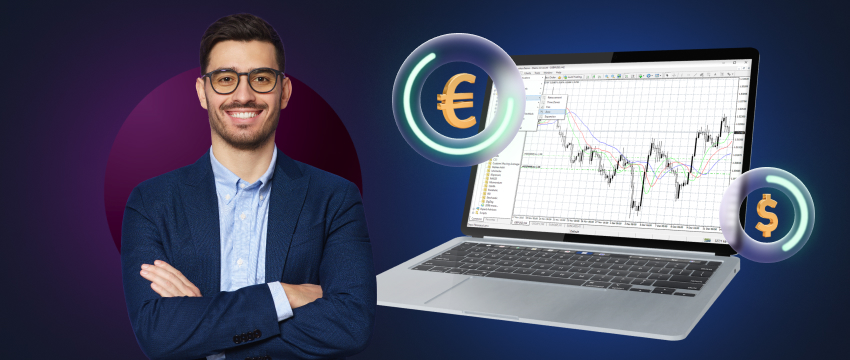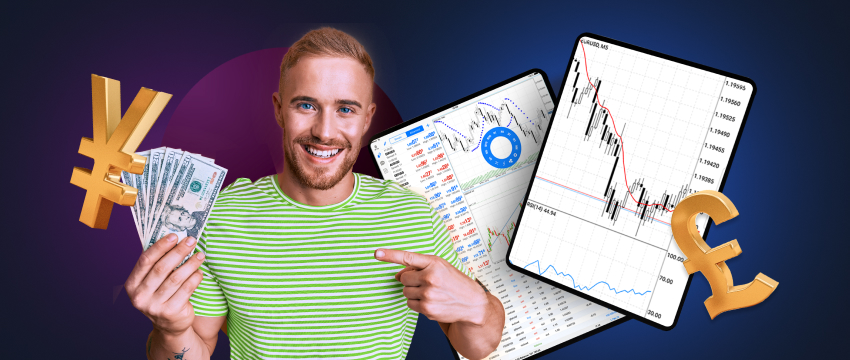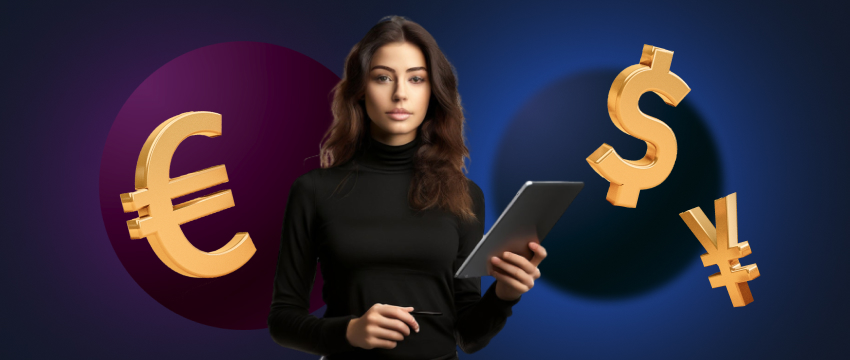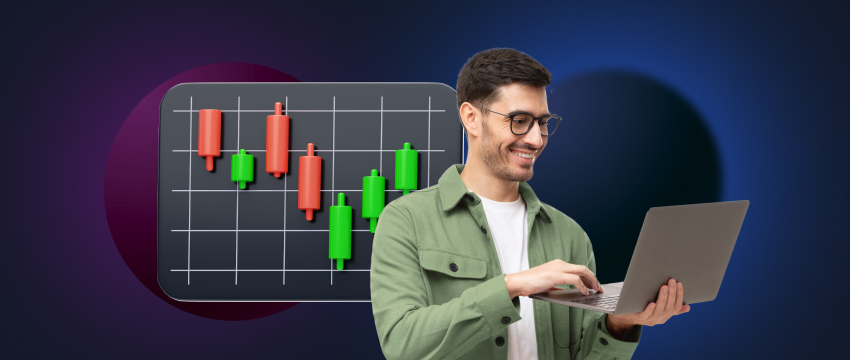Carry traders are typically forex traders who use a technique known as the currency carry trade. This strategy involves borrowing in a currency with a low interest rate and then investing in another currency that offers a higher interest rate.
As a result, the trader aims to profit from the interest rate difference.
Overall, this approach is popular in forex trading due to its potential for steady returns.
In other words, a trader would borrow money in a currency with a low interest rate. Then, they would buy another currency that has a higher interest rate.
The investor would try and make money from the difference between the two interest rates. And this is what a carry trade is at a glance. In this article, we explore how this strategy works and why it is commonly used by forex traders.

What’s a currency carry trade?
A carry trade involves buying a currency in a country that has a low interest rate (low yield). Then, the trader invests in a currency whose country has a high interest rate (high yield).
By holding a carry trade overnight, traders expect to receive an interest payment. This happens as a result of the ‘positive carry’ of the trade. The market refers to the lower-yielding currency as the “funding currency.” Meanwhile, traders call the currency with the higher yield the “target currency.”
A carry trade also may involve borrowing funds in a low interest-rate currency. Those funds are used to purchase any other asset with a higher potential return. For example, this could include 股票 or cryptocurrency.
The idea behind carry trades
With carry trades, traders hope to explore opportunities which arise when holding or, otherwise carrying, a currency for a period of time.
Despite their widespread use in foreign exchange trading, carry trades are a high-risk strategy. They require the proper market conditions. In addition, investors need investment knowledge to execute successfully.
The risks often arise from leverage. When a forex trader uses this strategy, they are focusing on capturing the difference between the rates.
This difference can be quite big. It depends on how much leverage they have used. This is why traders consider carry trades risky because they involve high leverage.
For those considering this strategy, understanding interest-rate differentials is crucial. Additionally, traders must consider exchange rate dynamics and global market conditions. These factors play a key role in the strategy’s success.
Low volatility can be a good thing
Carry trades perform well in low volatility. In such conditions, traders focus on the yield. Traders view any potential currency increase as a bonus.
In addition, carry traders are just happy when the currency doesn’t move. Similarly, the big hedge funds that trade huge amounts of currency are also pretty content when there is low volatility.
This is because they expect to earn the leveraged yield.
Carry trades and the Japanese yen
One common carry trade has been borrowing in JPY to invest in USD. Because of the Bank of Japan’s loose monetary policy, including eight years of negative interest rates, popular foreign currency carry trades have frequently involved the yen.
The monetary policy stance weakened the yen. As a result, international investors saw an opportunity. They paired the yen with the US dollar in a carry trade to profit.
For example, investors would purchase U.S. dollars and borrow in Japanese yen, paying zero percent interest and earning five percent at current rates, with fewer trading fees or other expenses. Additionally, they could fund investments with a higher expected return using their newly acquired U.S. dollars.

What are some of the risks?
As a trading strategy, a carry trade involves a number of trading risks such as forex volatility and shifts in interest rates, which can have an immediate impact on how effective a carry trade is.
The recent unwinding of the yen-US dollar carry trade, which has caused a sharp global sell-off in risky assets, is an example of this risk.
Japan’s monetary policy shift sparks market reaction
In March 2024, short-term interest rates rose for the yen. This followed the Bank of Japan’s bold decision to raise rates for the first time in 17 years. As a result, the bank reversed its long-standing ultra-loose monetary policy stance.
In late July, the central bank surprised markets by raising its key interest rate to 0.25%. Most had expected rates to stay the same. As a result, the yen saw a sharp increase in value. This was driven by the change in Japan’s monetary policy and declining U.S. economic data.
The impact of a strengthening yen on carry trades
Appreciation of the lower-yielding currency can reduce the potential gains from the interest-rate differential. As the yen strengthens and the interest-rate spread contracts, investors may choose to close out their carry trade positions.
If the yen continues to appreciate, the unwinding of international yen carry trades will increase. More yen will be bought to settle yen-denominated loans. As a result, the carry trade may become less appealing. This could lead to further unwinding of positions.
Investors often sell risky assets in favor of safer holdings. This can lead to the quick unwinding of leveraged positions. As a result, volatility may increase. This volatility can affect other asset classes.
Which investment strategies use carry trading?
Also, carry trade can be a high-risk strategy, and in order to reduce the possibility of significant losses, traders need to have a solid risk management plan in place.
Carry trading is used by alternative investment strategies, such as global macro funds and hedge funds. It can also be combined with positions that profit from momentum in exchange rate movements.
Carry trades may be used in a variety of other investment strategies in addition to alternative investments. In order to formulate opinions on central bank policy and national and international macroeconomic drivers, managers conduct in-depth research and fundamental analysis.
Selecting a knowledgeable investment manager is crucial, particularly when thinking about intricate investment plans. Although carry trading is frequently employed in currency markets, it is also a trading strategy used in commodities, fixed-income and equity markets.
Carry trades in a glimpse
There are two ways for traders to make money from currency carry trades: the exchange rate and the interest rate differential.
Gaining from a positive rollover rate applied to the position is the main goal of carry trade strategies. This implies that in order to ascertain which pair has a higher interest rate, you will need to calculate their respective interest rates.
The base currency is the “target currency” and the quote one is the “funding currency” when you are long on a currency pair.
Risk management is crucial because losses could occur if the pair moves against you or if the difference in interest rates narrows.

T4Trade: Exploring the markets with a regulated broker
If you are an investor, you are aware of the importance of having an all around education, the right tools and resources to help you stay on track and develop your skills and knowledge further. T4Trade provides 交易员 of all levels and abilities tailored education, so they can progress and learn at their own pace.
With quick execution, flexible leverage, and fast and free withdrawals and deposits, traders can focus on their strategy and enjoy superb trading conditions with a regulated and trusted forex broker. Additionally, our helpful support staff is available to you by phone, email, or live chat around-the-clock if you have any questions.
Additionally, T4Trade offers you access to unique resources to help you advance your abilities and become a professional trader with valuable insights from our professional forex traders, podcasters and webinar presenters.
An economic calendar to monitor financial indicators and activities is also available, while our in-house analysts can offer tips and analysis through free webinars or in-depth articles, which you can browse whenever you have the time. All of these are accessible through T4Trade Education, which is open to all online traders.
免责声明: This material is for general informational and educational purposes only and should not be considered investment advice or an investment recommendation. T4Trade is not responsible for any data provided by third parties referenced or hyperlinked in this communication.




